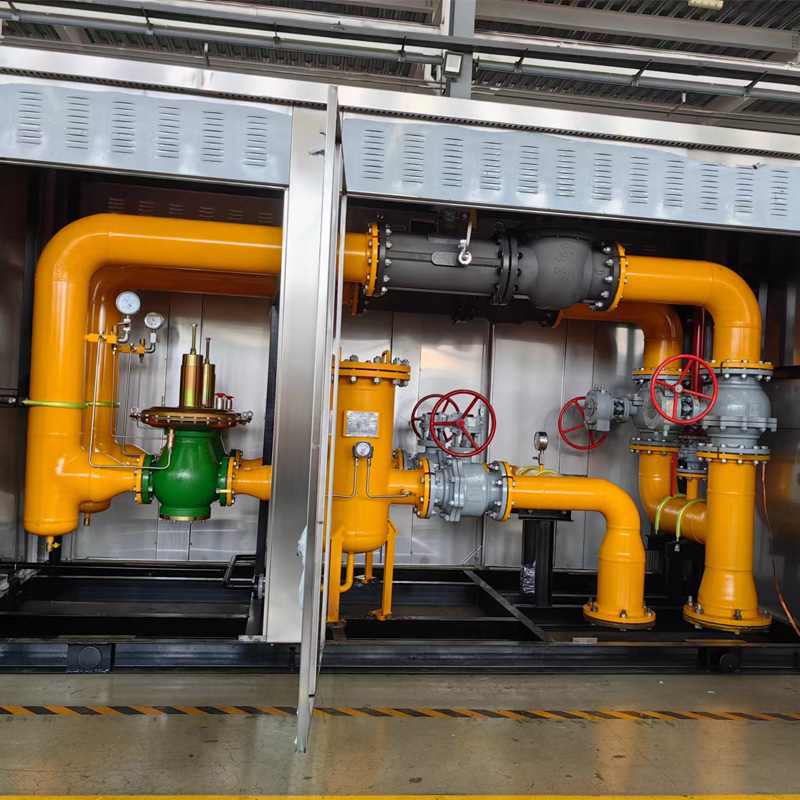
Aug . 11, 2024 01:58
Back to list
Innovative Solutions for Efficient Fluid Management with High-Quality Basket Strainers in Industrial Applications
Understanding Basket Strainers Essential Components in Fluid Management
In various industrial and commercial applications, effective fluid management is pivotal. One of the unsung heroes in ensuring smooth fluid flow and system efficiency is the basket strainer. This vital component plays a crucial role in protecting equipment and maintaining operational integrity in a diverse range of systems, from water treatment plants to oil refineries.
What is a Basket Strainer?
A basket strainer is a type of filtration device designed to remove debris and particulates from fluids. It consists of a mesh or perforated basket that captures unwanted materials as the fluid flows through it. The strainer typically fits into a pipeline and can be installed horizontally or vertically, depending on the system's design and requirements.
The materials used for basket strainers often include stainless steel, carbon steel, or plastic, depending on the specific application and fluid being processed. Stainless steel options are favored for their durability and resistance to corrosion, making them ideal for harsh environments.
How Do Basket Strainers Work?
The operation of a basket strainer is relatively straightforward. As the liquid enters the strainer, it passes through the mesh or perforated basket. Particles larger than the mesh size are trapped inside the basket while the filtered fluid continues to flow downstream. Over time, the accumulation of particles may restrict flow, necessitating periodic cleaning or replacement of the basket.
Basket strainers can be designed with varying mesh sizes, allowing operators to choose the appropriate level of filtration based on their specific needs. Fine mesh screens can catch small particles, making them suitable for sensitive applications, while coarser mesh options are effective for larger debris.
basket strainers

Applications of Basket Strainers
Basket strainers are employed in numerous applications across different industries. In the water treatment sector, they help protect pumps and valves from clogging by filtering out sand, debris, and other contaminants. Similarly, in HVAC systems, basket strainers play a crucial role in maintaining the efficiency of cooling and heating systems by preventing dust and particles from entering the machinery.
In the oil and gas industry, the use of basket strainers is equally important. They not only protect valuable equipment from damage but also ensure compliance with environmental regulations by preventing contaminants from entering the environment. Additionally, in chemical processing, basket strainers are used to safeguard reactors and other sensitive equipment from potential damage due to particulates.
Benefits of Using Basket Strainers
The primary benefit of basket strainers is their ability to enhance system reliability and efficiency. By filtering out undesirable particles, they reduce wear and tear on pumps, valves, and other equipment, leading to decreased maintenance costs and extended operational life. Furthermore, they also contribute to consistent product quality by ensuring that the fluid used in processes is clean and free from contamination.
Another advantage is ease of maintenance. Many basket strainers are designed for easy access, allowing for quick cleaning or replacement of the basket without requiring extensive system downtime. This feature is crucial in fast-paced production environments where efficiency is key.
Conclusion
In conclusion, basket strainers are essential components in a wide range of fluid management systems. Their ability to filter out debris and protect equipment makes them invaluable across industries such as water treatment, HVAC, and oil and gas. By understanding the role and benefits of basket strainers, operators can better appreciate their importance in maintaining system efficiency and reliability. Investing in quality basket strainers can lead to significant long-term savings, making them a wise choice for any fluid management strategy.
Latest news
-
Safety Valve Spring-Loaded Design Overpressure ProtectionNewsJul.25,2025
-
Precision Voltage Regulator AC5 Accuracy Grade PerformanceNewsJul.25,2025
-
Natural Gas Pressure Regulating Skid Industrial Pipeline ApplicationsNewsJul.25,2025
-
Natural Gas Filter Stainless Steel Mesh Element DesignNewsJul.25,2025
-
Gas Pressure Regulator Valve Direct-Acting Spring-Loaded DesignNewsJul.25,2025
-
Decompression Equipment Multi-Stage Heat Exchange System DesignNewsJul.25,2025

